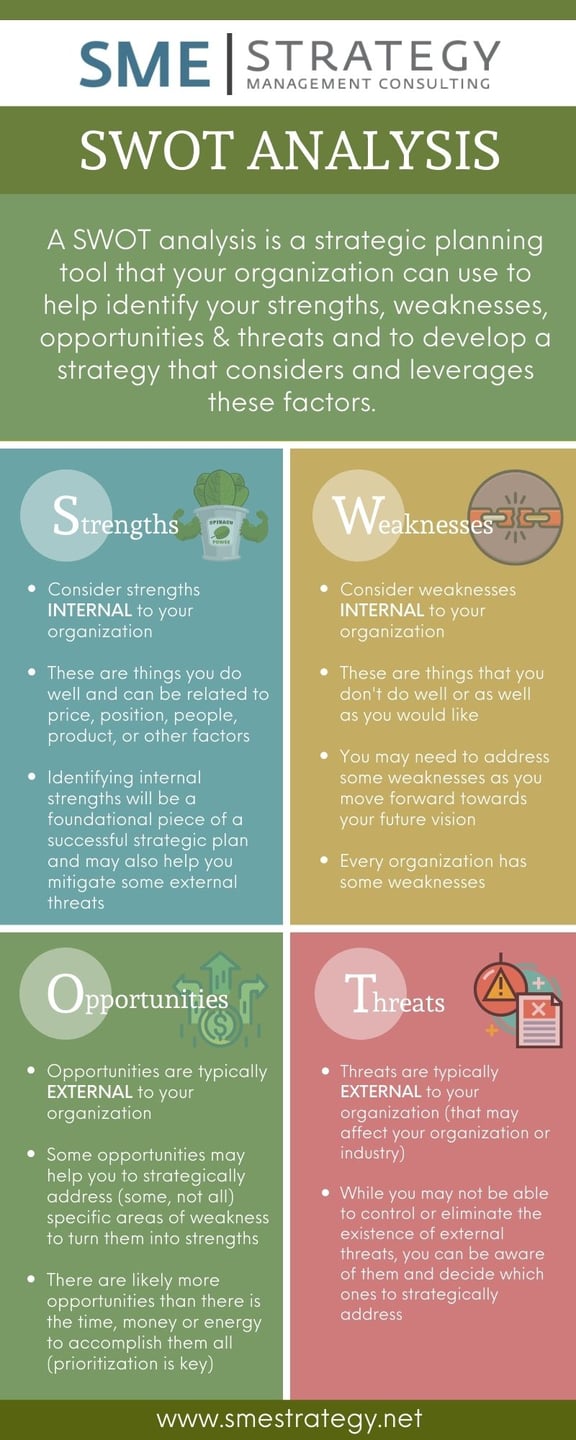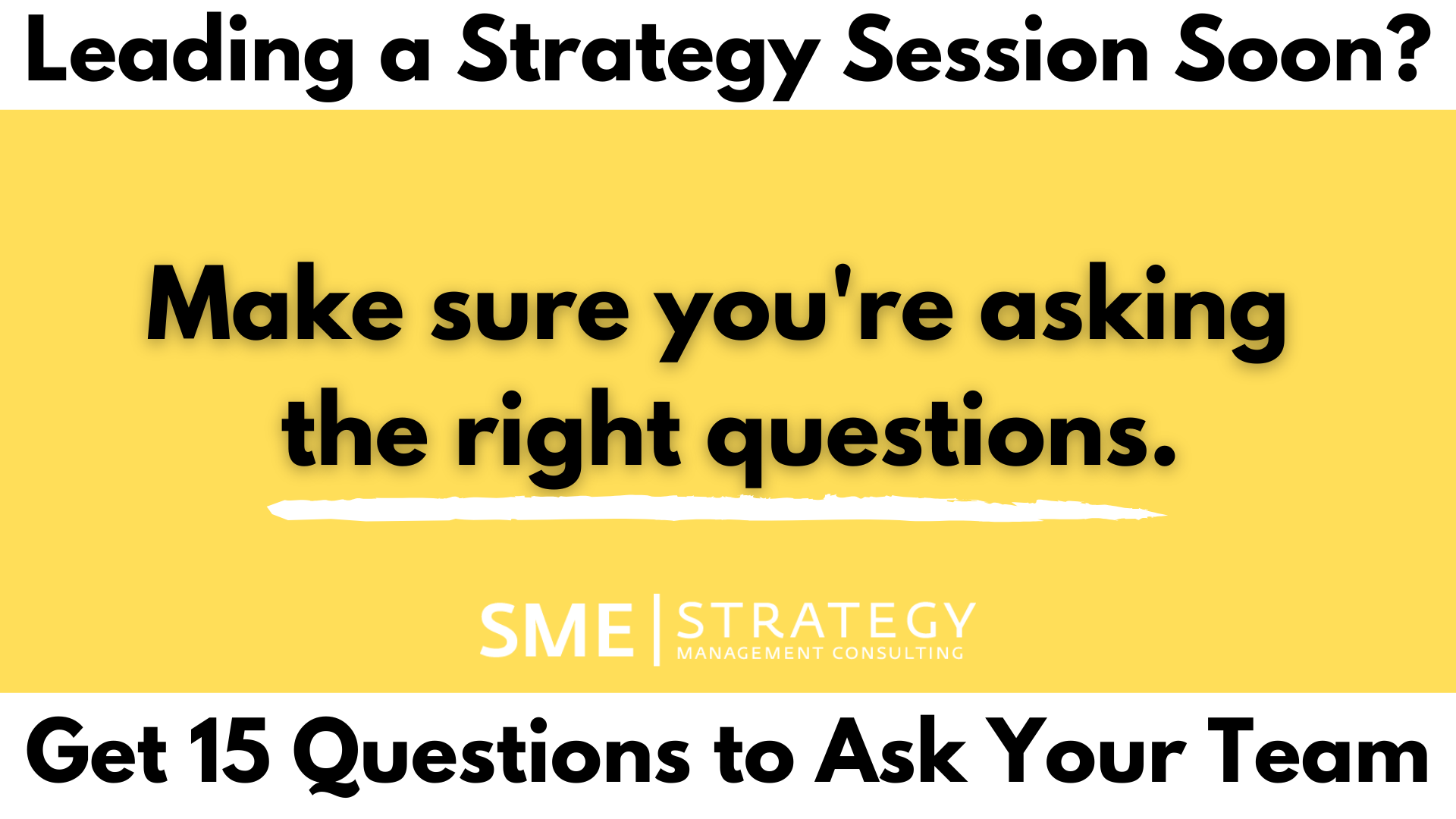SME Strategy is a strategy consulting company that specializes in aligning teams around their vision, mission, values, goals and action plans. Learn more about how we can help you and your team create a strategic plan with our strategic planning and implementation services.
Running a business is as much about the inside workings of a company as what goes on outside of it. A SWOT analysis is a helpful way to define your organization's strengths, weaknesses, opportunities and threats.
What is a SWOT analysis?
Whether looking at your own business or a competitive organization, you can use a SWOT to understand what's going on and what may happen next.
A SWOT can be used to determine where a company stacks up against it's competition, where it can improve internally, and how new opportunities can help combat its areas of weakness.

Strengths and Weaknesses:
These are internal issues. Here you identify what you do well and not so well. Understanding your strengths lets you focus your efforts into where you'll get the most gains.
Outlining weaknesses allows you to look into outsourcing, or finding someone that can pick up the slack to improve your company overall, or understand which external opportunities can help you address these weaker areas.
We can help you align your team around a clear vision, mission, values, goals and action plans,
so you can lead your organization more effectively and get better results.
Opportunities and Threats:
While strengths and weaknesses are the internal factors, your ability to capitalize on the external opportunities and threats is what's going to determine your businesses' long term success.
Opportunities and Threats lie outside of the organization and require the management team to be constantly aware of what's going on outside of its own doors.
One tool that is used to categorize these opportunities and threats is called PESTLE analysis.
Which stands for:
- Political
- Economic
-
Social
- Technological
- Legal
- Environmental
These are categories of external factors that might affect the ways you and your industry does business. Successful companies recognize these external factors in shaping their short term and long term business strategies.
History has shown many companies that have had to adjust core aspects of their businesses because of external threats. For example:
- Changes in government
- Smoking laws and how you're allowed to market to consumers
- Demographic changes (baby boomers etc...)
- Environmental changes and carbon offsets
- Decreases in the cost and increase in the availability of new technology
- Changes in tax law
Too often I see businesses think only internally and overlook the external factors that will affect them. Don't risk making this same mistake, and use a SWOT analysis the next time you do your strategic planning session.
Finally, look at the potential opportunities and threats that affect your business and your industry.
Not only will it give you insight into opportunities for growth in the future, but it will also give you insight into your competitors might be thinking of doing next. By identifying potential threats and risks, you significantly reduce the negative affect on your business because you'll be able to plan and react to them more effectively.
Incorporating a SWOT analysis into your strategic planning could be the difference in staying where you're at or becoming the market leader in your industry.




